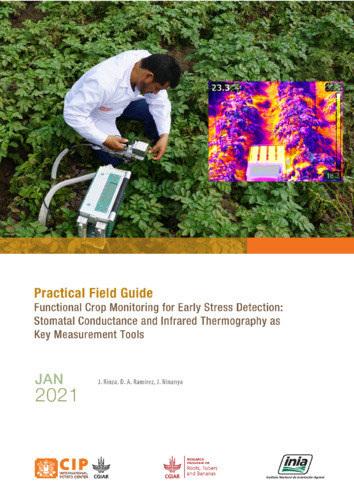Determining the right time for crop irrigation is critical to optimizing water use, and being a fundamental part
of a management decision support system. It is important to identify the time (when?) when we must irrigate
to save water and do not significantly reduce crop yield, as reported in research carried out at the
International Potato Center (CIP). This manual has been prepared for use by students, lecturers/faculties, and
researchers interested in early identifying crop stress and seeks to provide a set of tools. CIP recently
published those tools with funding from the National Program for Agricultural Innovation (PNIA) and the
CGIAR Research Program on Roots, Tubers, and Bananas (RTB). Our scopes have been based on the
measurement of the maximum light-saturated stomatal conductance, considered the main indicator of
plants’ water status, and its relationship with foliage temperature obtained from thermal images processed
using open-access software “TIPCIP” (Thermal Image Processor). We can thus compute the crop’s water stress
index (CWSI), a variable pointing to the degree of crop water stress and the right time for irrigation. This
manual provides a handy summary of procedures recently published in international journals that can be
applied practically to other crops and foster research on “Water Saving Agriculture” through ecophysiological
tools.
Practical Field Guide. Functional Crop Monitoring for Early Stress Detection: Stomatal Conductance and Infrared Thermography as Key Measurement Tools.
Citation: Rinza, J.; Ramírez, D.A.; Ninanya, J. (2021). Practical Field Guide. Functional Crop Monitoring for Early Stress Detection: Stomatal Conductance and Infrared Thermography as Key Measurement Tools. Lima, Peru: International Potato Center.
2021-12-18
CLIMATE CHANGE, CLIMATE-SMART AGRICULTURE, CROP AND SYSTEMS SCIENCES CSS, CROP PROTECTION
report

